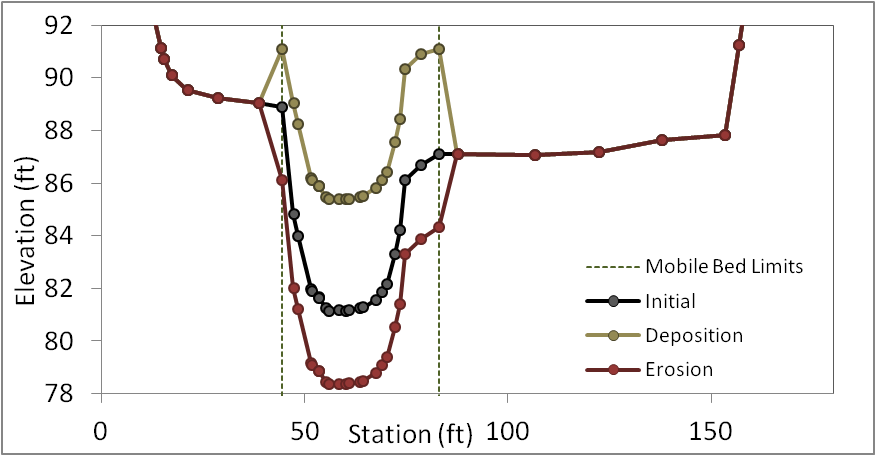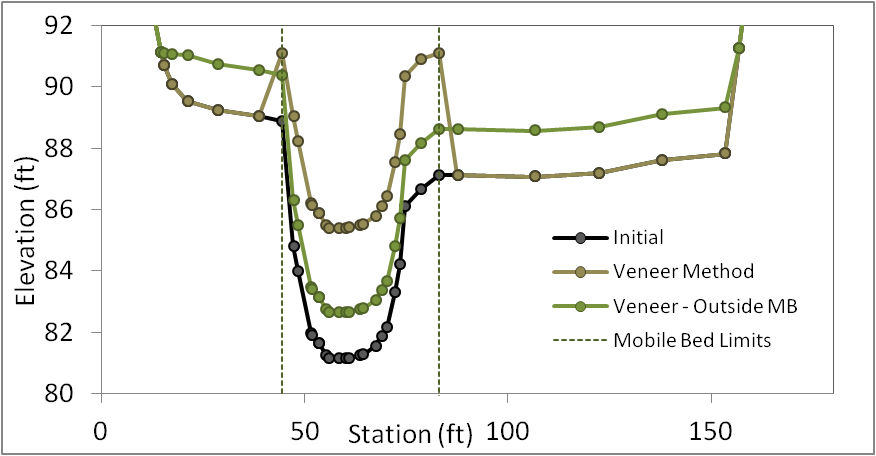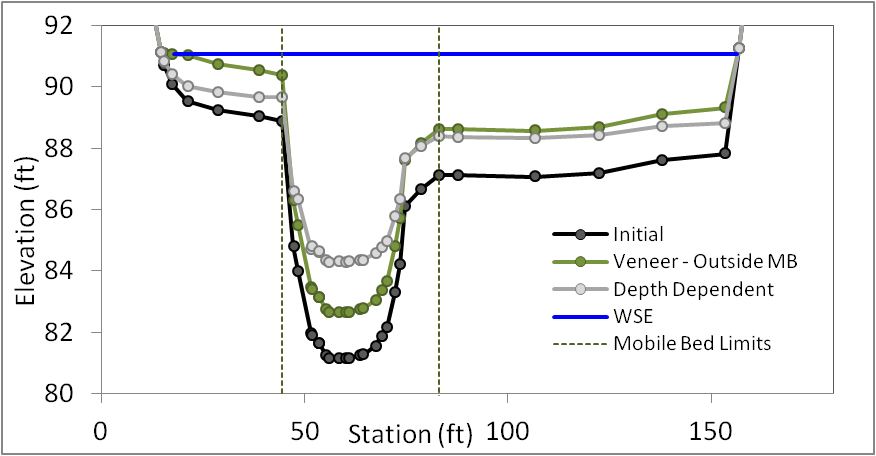Veneer Method
By default, HEC-RAS uses the "veneer method" to change cross sections. The veneer method changes all the wetted nodes within the movable bed limits the same vertical distance. Currently the only method available for translating erosion or deposition into changes in the cross-section shape is to deposit or erode each wetted, movable cross section station/elevation point equally. Following these guidelines, an example of a cross section update for erosional or depositional cases is included in the figure below. The points that move are both within the erodible bed limits and beneath the water surface elevation. For the erosion case, a duplicate point is generated if the mobile bed limit is wet.
 HEC-RAS will not erode any node included in an ineffective flow area regardless of the bed change method or where the erodible bed limits are placed. Water velocity in an ineffective flow area is, by definition, zero. Therefore, scour cannot occur at the cross section points in an ineffective flow area. However, HEC-RAS will allow deposition in ineffective flow areas.
HEC-RAS will not erode any node included in an ineffective flow area regardless of the bed change method or where the erodible bed limits are placed. Water velocity in an ineffective flow area is, by definition, zero. Therefore, scour cannot occur at the cross section points in an ineffective flow area. However, HEC-RAS will allow deposition in ineffective flow areas.
There are a couple of exceptions to these basic rules however. First, an alternate method which allows overbank deposition is available. This option handles erosion in precisely the same way as the default method, confining erosion to the movable bed limits. For the depositional case, however, HEC-RAS distributes bed change equally between all of the wetted points regardless of whether they are between the erodible bed limits or not (below, top). The principle behind this method is that eroding velocities or shears are limited to the channel, but deposition can occur in the floodplain where slowly moving water allows material to settle out.
Finally, HEC-RAS includes a depositional method that preferentially deposits in deeper parts of the cross section (bottom). This method can be useful in reservoirs, particularly in the prograding delta, where sand fills the channel. However, use it with care. Shear is often highest where the water is deepest, so depth dependent deposition requires low energy-high supply conditions.

